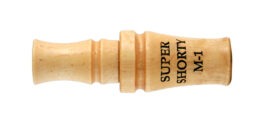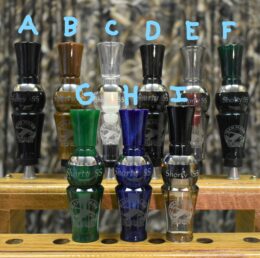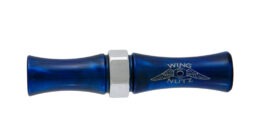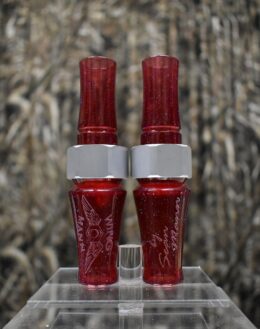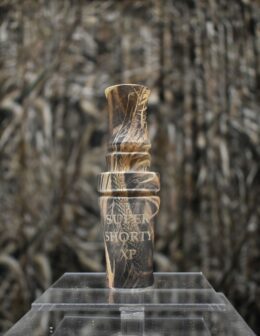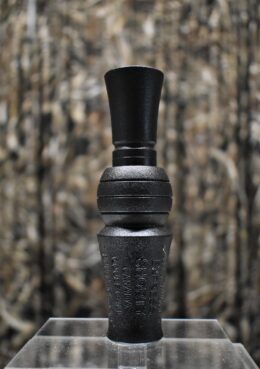Short Reed
History of the Shorty
In 1987, when I was going for my 3rd World Championship in a row, a young man from Delaware, Keith McGowan, came to the contest and put a lot of us on our ears.
Keith brought a rapid-fire approach to calling that nobody had heard up to that point. He was using a prototype short-reed call, and was the first person-ever to win the Championship with the next radical call design. He and I became friends almost immediately, and loved to compare notes on calls and calling. Keith won two more World Championships and was retired from competition as a result.
Even though he won three World Championships, Keith told me that he was never happy with the calls he used to accomplish the feat. I asked him what they lacked, and when he told me, the project that resulted in our “Shorty”, began. Keith’s first point of frustration was that other short-reeds required reed-shaving. That has always been a poor way to make up for badly designed internal parts, because as soon as you shave a reed, it is on its way to being a broken reed. Additionally, no two reeds will ever be alike! Do guitarists have to shave their strings?!
Our design took care of that. Design a superior set of internal parts and you’ll never have to shave a reed. Consequently, you will almost NEVER break a reed. If you do, it is no problem to replace it and attain the same tone you had before! As interchangeable as guitar strings!
Next Keith wanted more volume and low-end from the call. No problem there! Finally, he wanted the call to be indestructible. So, I turned them from Cast Acrylic.
The original “Shorty” was a huge success. In fact, our friend Kevin Popo used it to win the 2001 World Goose Calling Championship! He won it again in 2002 using a shorter “Shorty” which has become our standard in the SS, Top Brass, and EXPRESS series.
Showing all 7 resultsSorted by price: high to low


